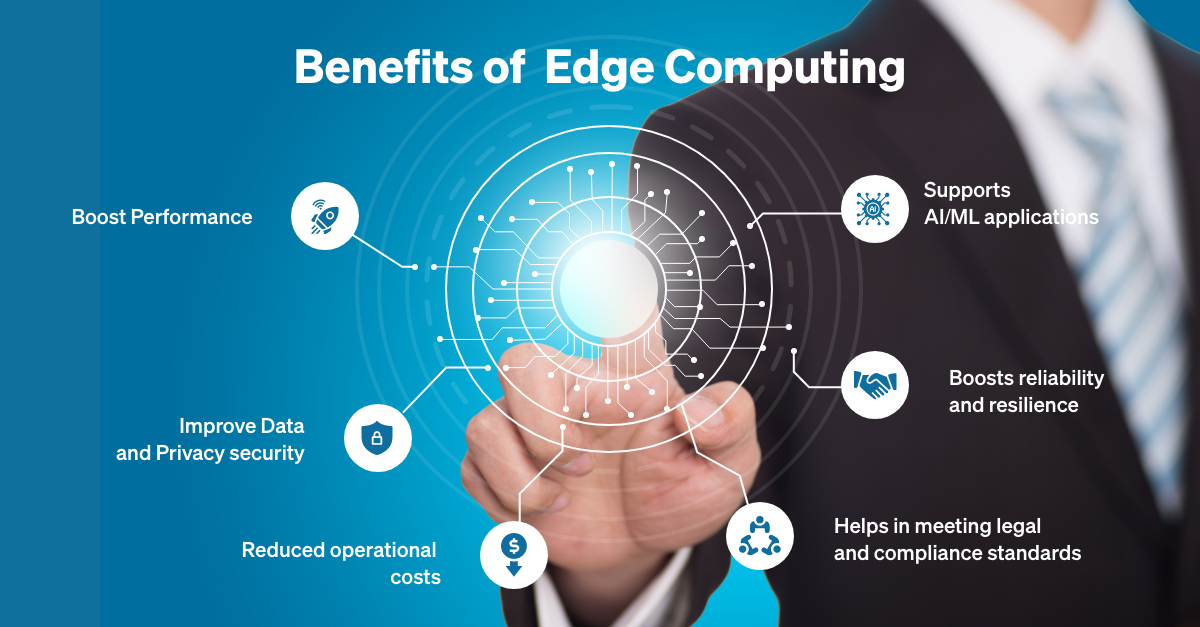
In today’s fast-paced digital landscape, where every millisecond counts, businesses are constantly seeking ways to enhance IT performance. Edge computing has emerged as a game-changing technology that promises to deliver substantial improvements. By processing data closer to its source, edge computing addresses many of the limitations of traditional cloud computing. Here’s a deep dive into the five essential benefits of edge computing and how it can supercharge your IT performance.
1. Reduced Latency and Faster Response Times
One of the most significant advantages of edge computing is its ability to drastically reduce latency. Traditional cloud computing often requires data to travel to and from centralized data centers, which can introduce delays. Edge computing brings computational resources closer to the data source—whether it’s IoT devices, sensors, or mobile devices. This proximity enables near-instantaneous processing and response times, crucial for applications that require real-time data processing, such as autonomous vehicles, industrial automation, and online gaming. By minimizing the distance data must travel, edge computing ensures faster and more reliable responses, enhancing overall IT performance.
2. Improved Bandwidth Efficiency
Bandwidth constraints can be a significant bottleneck for IT performance, especially with the proliferation of data-heavy applications and services. Edge computing alleviates this issue by performing data processing at the edge of the network rather than transmitting all data to a centralized cloud server. This localized processing reduces the amount of data that needs to be sent over the network, which helps in optimizing bandwidth usage. With reduced data transfer requirements, businesses can avoid network congestion and ensure smoother and more efficient operations.
3. Enhanced Data Security and Privacy
Data security and privacy are paramount in the digital age. Edge computing contributes to enhanced security by processing and storing data locally rather than sending it to a central cloud server. This localized approach minimizes the risk of data interception and breaches during transmission. Additionally, by keeping sensitive data closer to its source, edge computing can better comply with data sovereignty regulations and industry standards. Implementing robust security measures at the edge also means that even if a central cloud server is compromised, the localized edge devices remain secure.
4. Increased Reliability and Resilience
Reliability and resilience are crucial for maintaining uninterrupted IT performance. Edge computing improves system reliability by decentralizing data processing. In a traditional cloud setup, a failure at the central data center can disrupt services across the entire network. Edge computing distributes the load across multiple edge devices, reducing the impact of a single point of failure. This distributed architecture ensures that even if one edge device experiences issues, the rest of the network can continue to function smoothly, enhancing overall system resilience.
5. Cost Efficiency and Scalability
Managing and scaling IT infrastructure can be expensive and complex, particularly when dealing with vast amounts of data. Edge computing offers cost efficiency by reducing the need for extensive data transfer and minimizing the load on central cloud servers. By processing data locally, businesses can lower bandwidth costs and reduce cloud storage requirements. Additionally, edge computing enables scale able deployments, allowing organizations to add or adjust edge devices as needed without overhauling their entire IT infrastructure. This flexibility helps businesses scale their operations efficiently and cost-effectively.
How Companies Can Use Edge Computing as a Service to Operate More Efficiently
In an era where data is king and speed is crucial, businesses are constantly seeking ways to optimize their IT performance. Enter Edge Computing—a technology that’s transforming how data is processed and managed by bringing computation closer to the source. As companies look for scalable and flexible solutions, Edge as a Service (EaaS) has emerged as a powerful option. This approach allows businesses to leverage edge computing capabilities without the complexity of managing infrastructure. Here’s how companies can use Edge as a Service to operate more efficiently and enhance their IT performance.
1. Streamlined Deployment and Management
Traditionally, deploying edge computing solutions involves significant investment in hardware, software, and infrastructure. Edge as a Service simplifies this process by providing a managed service that delivers edge computing capabilities without the need for in-house infrastructure management. Companies can quickly deploy edge solutions through a subscription model, focusing on their core operations while leaving the complexities of deployment, maintenance, and scaling to the service provider. This streamlined approach not only reduces operational overhead but also accelerates time-to-market for new applications and services.
2. Enhanced IT Performance with Localized Data Processing
Edge as a Service allows businesses to process data closer to its source, significantly reducing latency and improving response times. By utilizing edge nodes distributed across various locations, companies can ensure that data is processed and analyzed in real-time, without the delays associated with centralized cloud processing. This localized data processing is especially beneficial for applications requiring immediate feedback, such as real-time analytics, IoT monitoring, and autonomous systems. Enhanced IT performance through EaaS translates into more responsive and efficient operations, giving businesses a competitive edge in their respective industries.
3. Optimized Bandwidth and Cost Management
One of the primary advantages of Edge as a Service is its ability to optimize bandwidth usage and reduce costs. By processing data at the edge, businesses can minimize the volume of data transmitted to centralized cloud servers, which helps in alleviating bandwidth constraints and avoiding network congestion. Additionally, since EaaS providers typically offer pay-as-you-go models, companies can manage their costs more effectively by only paying for the resources they use. This on-demand scalability ensures that businesses can handle fluctuating data loads without incurring unnecessary expenses.
4. Improved Security and Compliance
Data security and compliance are critical considerations for modern businesses. Edge as a Service enhances security by ensuring that sensitive data is processed locally, reducing the risk of data breaches during transmission. EaaS providers often include built-in security features such as encryption, access control, and regular security updates, which help businesses maintain robust security practices without having to manage these aspects independently. Additionally, local data processing helps companies comply with data sovereignty regulations by keeping data within specific geographic boundaries.
5. Scalability and Flexibility
The dynamic nature of today’s business environment requires IT solutions that can scale rapidly and flexibly. Edge as a Service offers scalability by allowing companies to easily expand their edge computing capabilities as their needs grow. Whether it’s deploying additional edge nodes or integrating new applications, EaaS provides the flexibility to adapt to changing requirements without the need for extensive hardware investments. This scale able approach ensures that businesses can continuously enhance their IT performance and stay agile in response to market demands.
Edge as a Service is a trans-formative approach that empowers companies to leverage edge computing’s benefits while minimizing the complexities of infrastructure management. By streamlining deployment, enhancing IT performance, optimizing bandwidth and costs, improving security, and providing scalability, EaaS enables businesses to operate more efficiently and effectively. As organizations continue to embrace digital transformation, Edge as a Service offers a compelling solution for optimizing IT performance and staying ahead in an increasingly competitive landscape.


